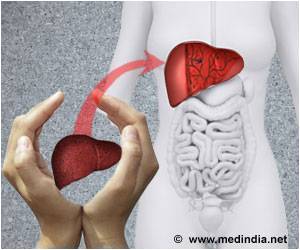The greatest demand for liver transplantation due to hepatitis C (HCV)-related liver disease occurs among Americans born between 1941 and 1960, reveals new research.

HCV is the most common blood-borne infection and cause of liver disease requiring transplantation in the U.S., chronically infecting more than one percent of Americans. Previous studies show that among patients living with chronic HCV, 10% to 20% will develop cirrhosis and up to 5% will progress to liver cancer (hepatocellular carcinoma; HCC). Further evidence implicates HCV as the primary risk factor for developing HCC in up to 47% of cases of patients with HCC.
The peak U.S. HCV prevalence of 4% occurred in those born in 1940 through 1965, who were 20 to 30 years of age during 1979 to 1989, when HCV infection risk was at its highest. As this population ages, Davis et al. project that between 2000 and 2030 cirrhosis in patients with HCV will increase two-fold, from 472,000 to 879,000. Moreover, Wise et al. suggests HCV-related deaths will increase in Americans 55 to 64 years of age by 2004.
"The dire projections in HCV complications spurred our investigation of age-specific trends in liver transplantation demand," said lead author Dr. Scott Biggins with the University of Colorado School of Medicine in Aurora, Colo. For the present study, researchers identified all adult liver transplant candidates who were registered with the Organ Procurement and Transplantation Network (OPTN) between 1995 and 2010. Patients were then classified with the diagnosis of HCV, with or without HCC.
Results show there were 126,862 new candidates for first liver transplant registered with OPTN, with 41% of these having HCV. Candidates were categorized by birth year and found that the highest HCV frequency (in decreasing order) were those born in 1951-1955, 1956-1960, 1946-1950, and 1941-1945. These four birth groups represent 81% of all new liver transplant registrants with HCV.
Furthermore, findings indicate that between 2000 and 2010 there was a four-fold increase in new transplant candidates with HCV and HCC in the 1941 to 1960 birth cohorts. The authors anticipate an increase in the proportion of new registrants, 60 years and older, with HCV will have liver cancer.
Advertisement
Source-Eurekalert















